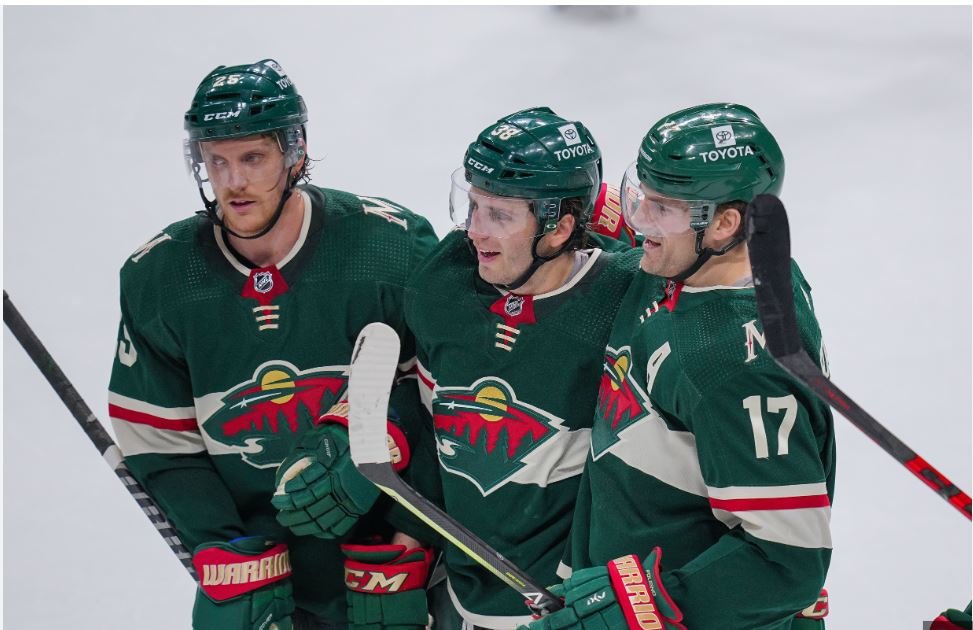
The Minnesota Wild hockey team finds itself at a crossroads as it navigates through uncertain times following the revelation that one of its star players has requested a trade due to a “bleach clause.” This situation has stirred significant discussion and speculation within the hockey community, impacting team dynamics, fan sentiment, and the broader landscape of the NHL. This essay explores the implications of the trade request, the underlying issues surrounding the “bleach clause,” the reactions from stakeholders, and the potential paths forward for the Minnesota Wild.
The Minnesota Wild, a franchise established in 2000, has built a reputation as a competitive team in the NHL’s Western Conference. Over the years, they have fielded talented players and experienced varying degrees of success in the playoffs. However, like all teams, they face challenges both on and off the ice, including contract negotiations, player management, and maintaining a cohesive team culture.
The revelation that a star player on the Minnesota Wild has requested a trade due to a “bleach clause” has sent shockwaves through the hockey world. While the exact details of the clause remain undisclosed, it is understood to involve a contractual provision that triggers specific conditions under which the player can request a trade. Such clauses often relate to team performance, management changes, or personal considerations that affect the player’s desire to continue with the team.
Player Relationships and Team Chemistry
The trade request can disrupt team dynamics and chemistry, especially if the player’s intentions become public knowledge before resolution. Teammates may feel uncertain or concerned about the future, affecting morale and on-ice performance. The coaching staff and management must navigate these interpersonal dynamics delicately to minimize distractions and maintain focus.
Leadership and Coaching Strategies
For the coaching staff and team leadership, the trade request presents a challenge in maintaining stability and focus. They must ensure that all players remain committed to the team’s goals and objectives despite the uncertainties surrounding the star player. Adjusting strategies and managing player rotations become crucial to fill potential gaps in the roster caused by the player’s absence or pending departure.
Fan Engagement and Loyalty
Fans play a significant role in the NHL ecosystem, and their reactions to trade requests can impact team morale and financial stability. The Minnesota Wild’s fan base, known for its passionate support, may express disappointment or frustration over the potential loss of a star player. Season ticket sales, merchandise purchases, and attendance at games could be influenced by how the situation is handled by team management.
Media Scrutiny and Public Perception
Media coverage of the trade request amplifies public interest and scrutiny. Journalists and commentators analyze the implications for the team’s future, the player’s motivations, and the broader implications for the league. The public perception of how the Minnesota Wild manage the situation will shape narratives and influence stakeholder opinions, including potential free agents and sponsors.
Contractual Dynamics and Player Empowerment
The trade request highlights the evolving dynamics between players and teams regarding contract negotiations and player empowerment. Modern NHL contracts often include clauses that provide players with leverage in determining their future based on specific criteria. This trend reflects a broader shift towards recognizing players’ rights and preferences in shaping their careers.
Competitive Balance and League Integrity
From a competitive standpoint, the trade request raises questions about maintaining parity and integrity within the NHL. Ensuring fairness in player transactions and maintaining competitive balance across teams is essential for the league’s credibility and fan engagement. The NHL’s governance and regulatory framework may need to adapt to evolving player rights and contractual complexities.
Potential Paths Forward for the Minnesota Wild
Negotiation and Resolution
The first step for the Minnesota Wild involves engaging in constructive negotiations with the star player and their representatives. Understanding the player’s motivations, addressing concerns, and exploring potential solutions are critical to reaching a mutually beneficial resolution. This process may involve renegotiating contract terms, discussing future team plans, or exploring trade options that satisfy both parties.
Team Unity and Focus
Maintaining team unity and focus amidst uncertainty is vital for the Minnesota Wild’s success. Clear communication from coaching staff and management, emphasizing collective goals, and rallying around shared values can help stabilize the team environment. Empowering players to focus on their roles and responsibilities on the ice promotes resilience and cohesion during challenging times.
Public Relations Management
Effective public relations management is essential to manage external perceptions and maintain trust with fans, sponsors, and the broader hockey community. Transparent communication about the team’s strategies, respect for player privacy, and commitment to competitive excellence reinforces the Minnesota Wild’s reputation as a professional and responsible organization.
Future Planning and Recruitment
Looking ahead, the Minnesota Wild may need to evaluate their roster composition and long-term strategy in response to the trade request. Assessing potential replacements or reinforcements, scouting prospects, and exploring trade opportunities can position the team for success beyond the current situation. Strategic planning ensures continuity and adaptability in a competitive NHL landscape.
The Minnesota Wild’s handling of the star player’s trade request due to a “bleach clause” represents a critical juncture for the franchise. Navigating the complexities of player contracts, team dynamics, fan sentiment, and league implications requires careful consideration and decisive action. By prioritizing communication, negotiation, and team unity, the Minnesota Wild can mitigate disruptions and position themselves for sustained success. The outcome of this situation will not only impact the team’s immediate performance but also shape its identity and direction for years to come in the competitive world of NHL hockey.

Leave a Reply